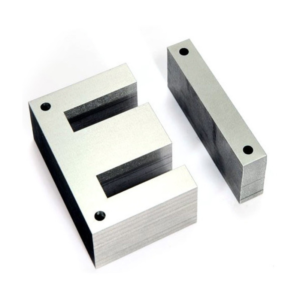
Introduction
Overview of transformer core shapes
In the realm of transformer engineering, the design of the transformer core holds paramount importance, with various shapes employed to cater to specific requirements. Transformer cores typically come in several configurations, including the common E-shaped, C-shaped, and toroidal designs. Each shape possesses distinct structural attributes and operational characteristics that directly impact transformer performance.
Importance of understanding the impact of core shape on transformer performance
Understanding the implications of core shape on transformer functionality is essential for engineers and designers alike. Core shape influences critical factors such as magnetic flux distribution, losses, and overall efficiency. For instance, different core shapes may exhibit varying levels of magnetic flux concentration, which can affect the transformer’s ability to transfer energy efficiently. Additionally, variations in core shape can impact factors like eddy current losses and magnetic saturation, further influencing overall performance.
By comprehensively grasping the impact of core shape on transformer performance, engineers can make informed design decisions to optimize efficiency, minimize losses, and enhance overall functionality. This understanding facilitates the selection of the most suitable core shape for specific applications, ensuring optimal performance and reliability in transformer operations. Therefore, delving into the intricacies of core shape is fundamental for advancing transformer design and engineering practices.
Comparative Analysis of Transformer Core Shapes
Exploring Various Core Shapes
Transformer cores exhibit diverse configurations, such as the commonly used E-shaped, C-shaped, and toroidal designs. Each shape presents unique structural characteristics and operational attributes.
Evaluating Advantages and Disadvantages
Comparing the merits and drawbacks of each core shape provides valuable insights. For instance, E-shaped cores offer efficient flux distribution but may be prone to higher eddy current losses compared to toroidal cores. Conversely, toroidal cores boast reduced losses but may present challenges in manufacturing and winding.
Analyzing Impact on Performance Factors
The core shape significantly influences critical performance factors, including magnetic flux distribution, losses, and efficiency. E-shaped cores, with their elongated design, facilitate effective flux distribution but may experience higher losses due to increased winding resistance. In contrast, toroidal cores, with their continuous circular shape, minimize flux leakage and eddy current losses, resulting in enhanced efficiency.
Performance Evaluation
Impact of Core Shapes on Transformer Performance Metrics
Examining how various core shapes influence transformer performance metrics is crucial for understanding their operational efficiency. Each core shape presents distinct characteristics that directly affect factors such as magnetic flux distribution, losses, and overall efficiency.
Delving into efficiency, power losses, and voltage regulation provides insights into the operational effectiveness of different core shapes. For instance, certain shapes may exhibit lower eddy current losses and improved efficiency, leading to enhanced voltage regulation and reduced power wastage.
Temperature Distribution and Heat Dissipation
Core shape plays a pivotal role in determining temperature distribution and heat dissipation within the transformer. Variations in core shape can impact thermal characteristics, influencing factors such as hot spot formation and cooling efficiency. Understanding these effects is vital for ensuring optimal temperature management and preventing thermal-related issues.
Practical Considerations
Cost Implications of Different Core Shapes
Assessing the cost implications associated with various core shapes is essential for budgetary planning and cost-effective transformer design. Different shapes may incur varying material costs, manufacturing expenses, and operational overheads, which must be carefully evaluated.
Manufacturing Challenges and Considerations
Identifying and addressing manufacturing challenges associated with different core shapes is critical to ensuring smooth production processes and high-quality outcomes. Factors such as complex geometries, precision machining requirements, and assembly difficulties may present challenges that require specialized manufacturing techniques and equipment.
Compatibility with Winding Configurations and Insulation
Evaluating the compatibility of core shapes with winding configurations and insulation materials is imperative for seamless transformer assembly and operation. Certain core shapes may be better suited to accommodate specific winding arrangements, while others may pose constraints or limitations. Additionally, considerations regarding insulation compatibility and insulation placement must be taken into account to ensure electrical safety and performance reliability.